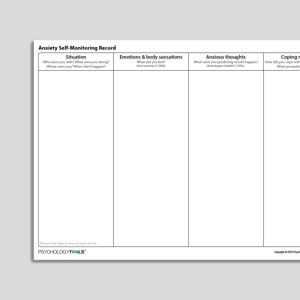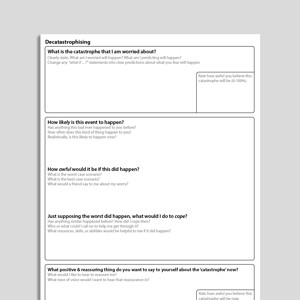Full resource pack (PDF)
Everything you could need: a PDF of the resource, therapist instructions, and description with theoretical context and references. Where appropriate, case examples and annotations are also included.
Worksheet only (PDF)
A copy of the worksheet in PDF format.
Fillable version (PDF)
A fillable version of the resource. This can be edited and saved in Adobe Acrobat, or other PDF editing software.
Editable version (PPT)
An editable Microsoft PowerPoint version of the resource.
Editable version (DOC)
An editable Microsoft Word version of the resource.





